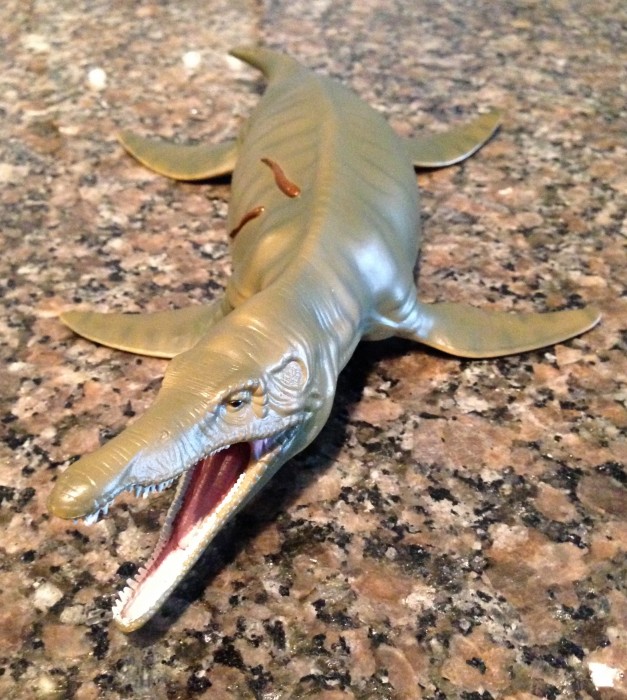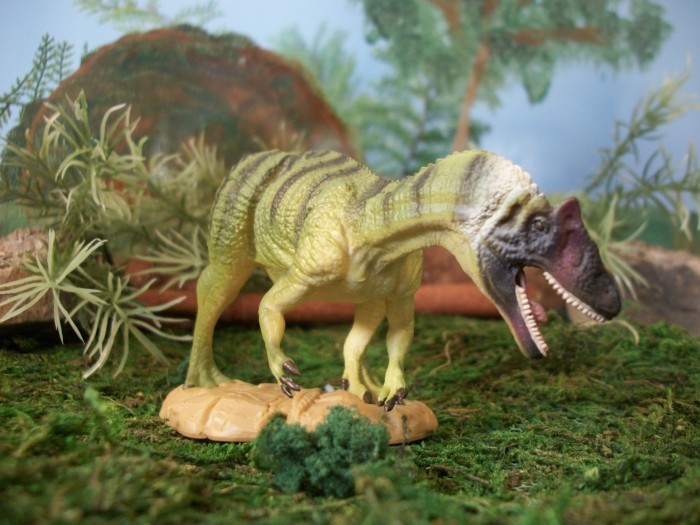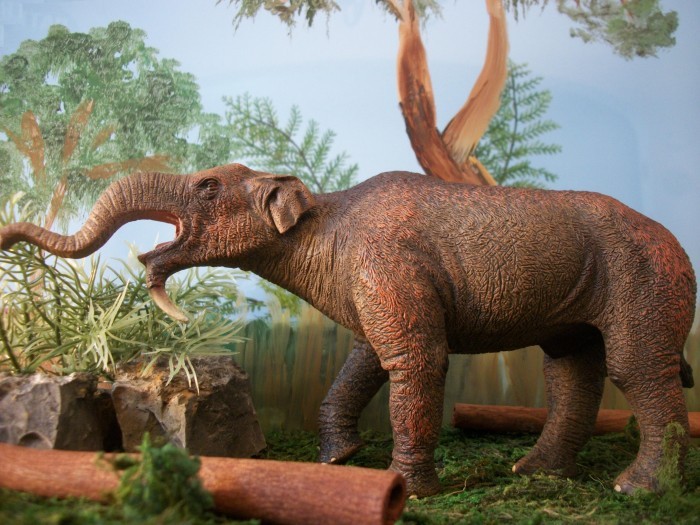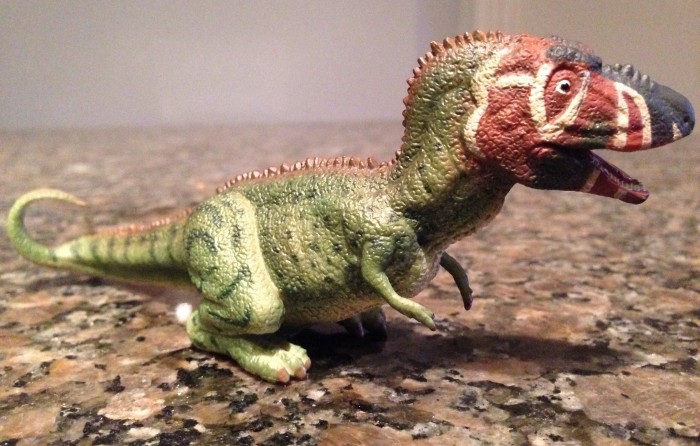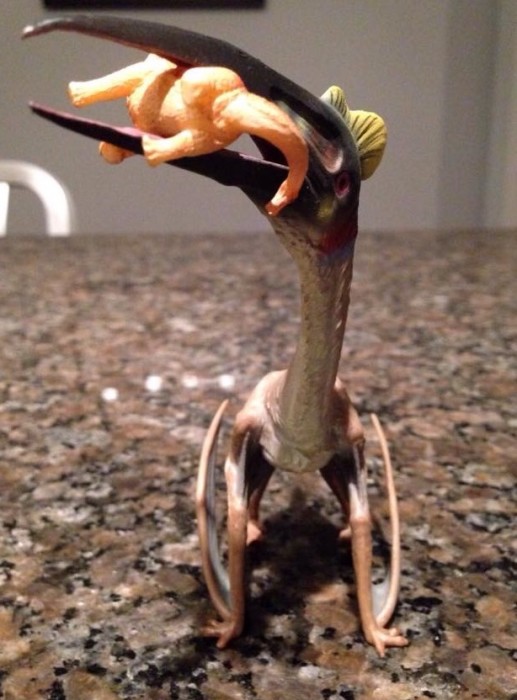Brand: CollectA
Review: Utahraptor (CollectA)
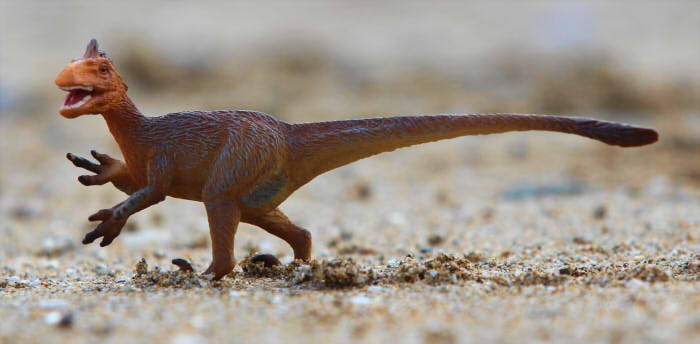
3.1 (14 votes)
Review and photographs by Tallin, edited by Plesiosauria.
As one of the largest of the dromaeosaurids, Utahraptor ostrommaysorum perhaps first garnered significant public attention after starring in the 1999 animated documentary, Walking with Dinosaurs. Since this time, the scientifically accepted appearance of this 7m theropod has changed considerably, as more evidence has been unearthed supporting the idea that this creature was fully feathered – much like its far smaller kin.
As one of the largest of the dromaeosaurids, Utahraptor ostrommaysorum perhaps first garnered significant public attention after starring in the 1999 animated documentary, Walking with Dinosaurs. Since this time, the scientifically accepted appearance of this 7m theropod has changed considerably, as more evidence has been unearthed supporting the idea that this creature was fully feathered – much like its far smaller kin.
Review: Saurophaganax (CollectA)
Review: Amargasaurus (Deluxe version by CollectA)

2.9 (22 votes)
Review and photographs by Tallin, edited by Plesiosauria.
One of the most recognisable of the sauropods, Amargasaurus cazaui has been well represented in toy form, with examples from most of the major brands. This is the second Amargasaurus that CollectA have released, this model dating back to 2012 and part of their 1:40 scale line – four years since their first attempt at recreating this beastie.
One of the most recognisable of the sauropods, Amargasaurus cazaui has been well represented in toy form, with examples from most of the major brands. This is the second Amargasaurus that CollectA have released, this model dating back to 2012 and part of their 1:40 scale line – four years since their first attempt at recreating this beastie.
Review: Alamosaurus (CollectA)
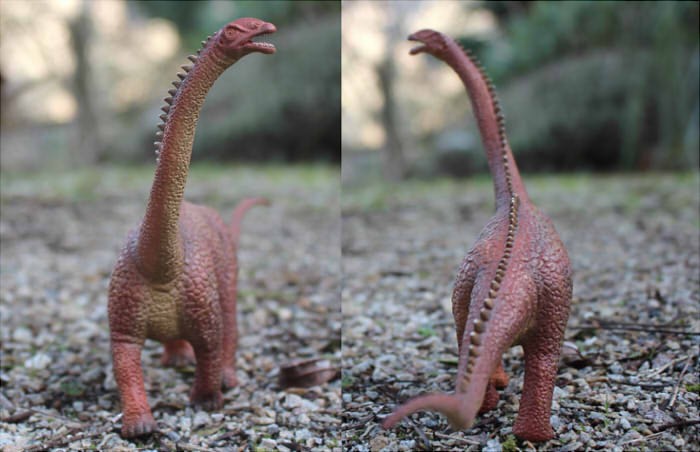
3 (28 votes)
Review and photographs by Tallin, edited by Plesiosauria.
One of the last and most massive of the sauropods, Alamosaurus sanjuanensis, was a colossal titanosaur from the Late Cretaceous Period. Its reign lasted right up until the K-T extinction and it lived in the same environments as Tyrannosaurus rex – it has been found all over North America.
One of the last and most massive of the sauropods, Alamosaurus sanjuanensis, was a colossal titanosaur from the Late Cretaceous Period. Its reign lasted right up until the K-T extinction and it lived in the same environments as Tyrannosaurus rex – it has been found all over North America.
Review: Pachycephalosaurus (CollectA)
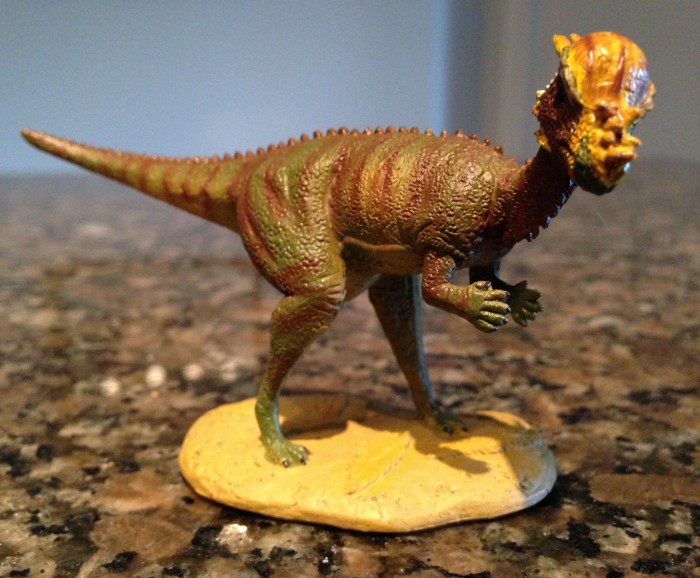
3.9 (17 votes)
With its wonderful knobby skull and domed cranium, Pachycephalosaurus is one of the most distinctive dinosaurs. Paleontologists are still divided over how precisely it used its noggin, although a 2013 study by the University of Wisconsin concluded that it did indeed engage in intraspecific conflict.
Review: Deinotherium (Deluxe Collection by CollectA)
Review: Bistahieversor (CollectA)

4.5 (21 votes)
Bistahieversor was a large basal tyrannosaurid hailing from New Mexico. ‘Bistahi’ is a Navajo word that refers to the Bisti badlands where the dinosaur’s fossil remains were discovered while ‘eversor’ appropriately means ‘destroyer.’
In stark contrast to 2013’s lethargic Daspletosaurus, the 2014 CollectA Bistahieversor is sculpted in a dynamic action pose.
Review: Hypsilophodon family (CollectA)

4.1 (9 votes)
Hypsilophodon was a tasty little morsel for vacationing and local carnivorous animals during the early Cretaceous. It is believed the Hypsilophodon would have been very fast and nimble. Along with its small size; it was probably a hard catch for the predators, un-like many of us today, Cretaceous predators probably did not like the idea of fast food.
Review: Daspletosaurus (CollectA)
Review: Liliensternus (CollectA)
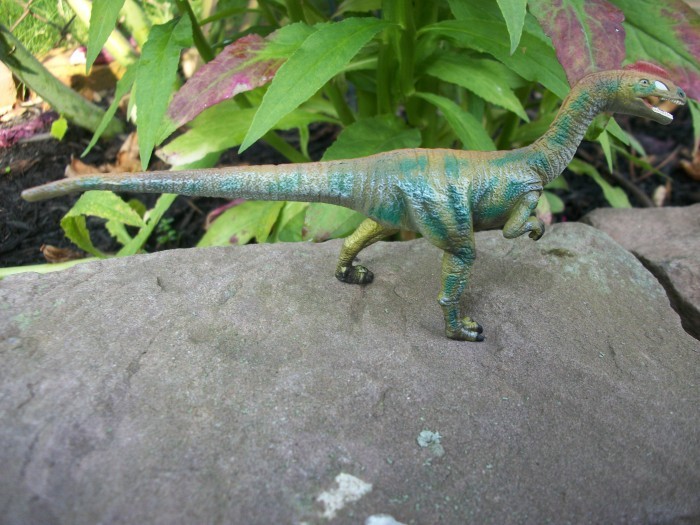
3 (11 votes)
History: Ah the Triassic, a vastly important but overlooked period of time that occurred before the Jurassic. The Triassic began in the wake of the massive die off and it would take 30 million years for life to recover. Strange and magnificent beasts emerged from the dust and battled for control of Pangaea.

